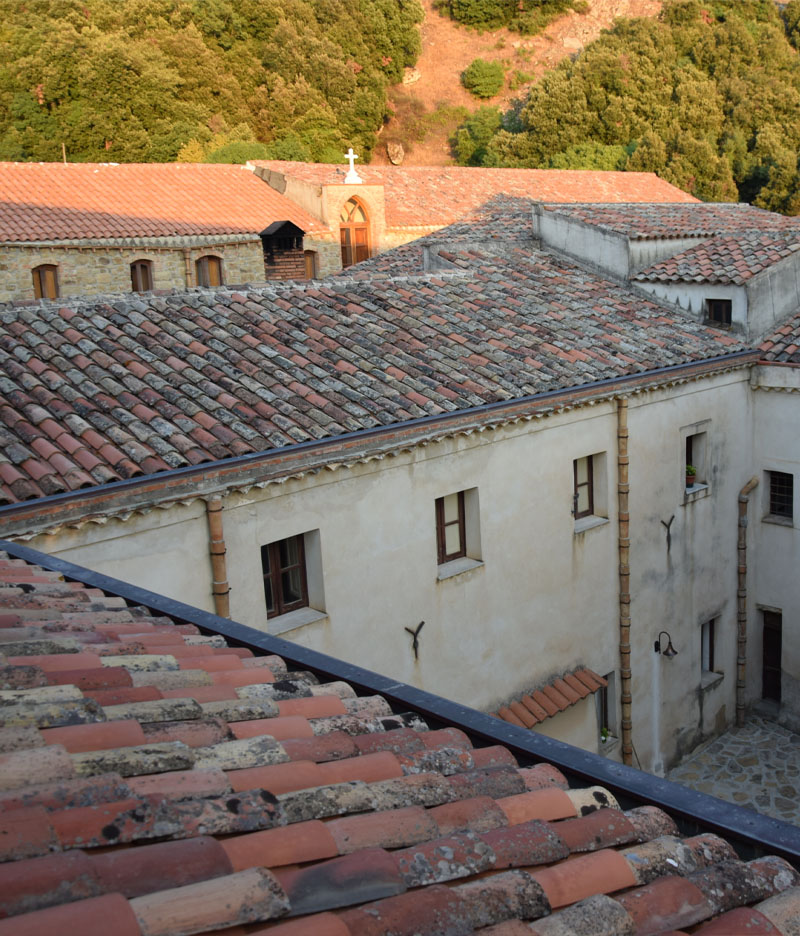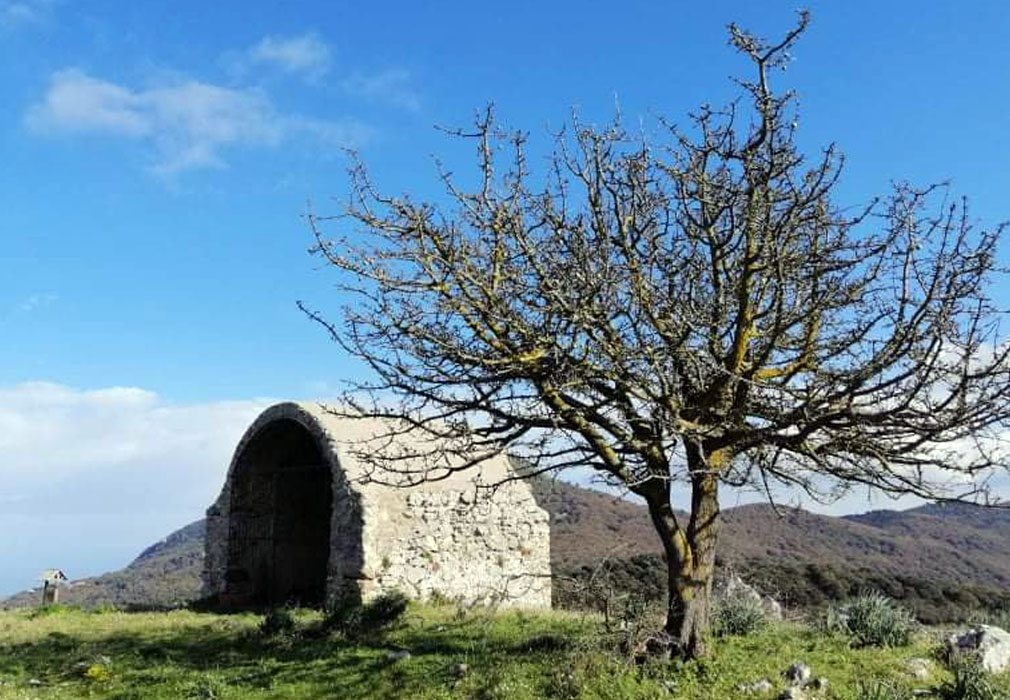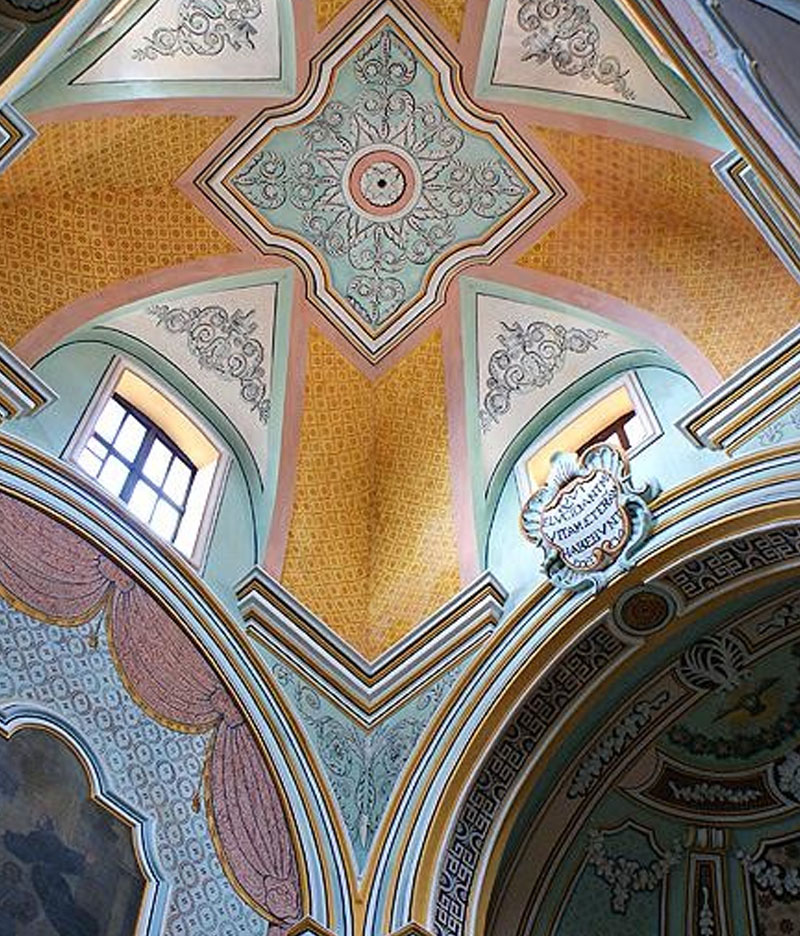Your basket is currently empty!
Monk Sebastiano Majo: the mystic from Gratteri
FATHER SEBASTIANO MAJO, MYSTIC OF GRATTERI AND THE LEGEND OF THE MADONNA OF GIBILMANNA
Gratteri gave birth to Father Sebastiano Majo (1504-1580), a man of great evangelical virtues, a mystic, and founder of the famous sanctuary of Gibilmanna. Father Sebastiano was born in Gratteri in 1504 by the noble family Maio.
As a young man he embraced the monastic life of the Minor Conventual and, at 12 years of age, he entered the convent of S. Francesco in the church of Santa Maria di Gesù in Gratteri. Ordained a priest, in 1528 he was sento to Calabria to found a new Franciscan community.
Here after he met Father Matteo da Bascio, wore the habit of the Capuchin friars and, in 1535, after returning to Sicily, founded, in Gibilmanna, the fifth convent of the Capuchin order of the island, becoming Vicar General. In that convent, Father Sebastiano was the first guardian and master of the novices, leading an austere and poor life.
Father Benedetto Passafiume, a contemporary of his, wrote:


“He was endowed with a prophetic spirit and a great vision of Heaven […] he always used to sleep on bare tables; so that he seemed to be in contemplation rather than resting […] almost every night he whipped himself on the bare flesh, after taking off the habit, he used to whip himself with the “bruzzolini” […]
Once, while sailing in the open sea, his ship was assaulted by pirates but Father Sebastiano, in order to save the others, offered himself as a target for the bandits’ shots. Some witnesses claim to have seen Saint Francis who acted as the shield to his servant Sebastiano, while he was picking up the arrows that fell at his feet ” (Passafiume – Op. Cit, già in Scelsi, 1981).
The humble friar, in old age, had mystical visions that occurred especially during the Eucharistic celebrations. In 1576, during a Friday of Lent, in the church of Gibilmanna dedicated to San Michele Arcangelo, the Ecce Homo appeared to him at the moment of the Eucharistic consecration.
Jesus Christ appeared to him in Ostia viva, crowned with thorns, with a heavy chain around his neck and a rod in his hand, and invited him to paint him as he was. Father Sebastiano took the colors from the plants and painted a portrait, still exposed on the left side of the high altar of the Santuario di Gibilmanna. At the base of the painting you can read:
“Di duri spini il capo coronato / riguarda il tuo Signore, spirito diletto / di sangue è lo cerebro emacillato / del quale bagna lo viso e lo petto / da mille punti il capo è perforato / e la catena al collo a suo dispetto / la canna per insegna come stulto / gli occhi piangenti di vesti porporato / Nel luogo di Gibilmanna fra Sebastiano da Gratteri Capochino indigno servo 1576 10 di Marzo”. (Scelsi, 1981)


In 1577 he was sent to Castelbuono where he founded another Capuchin convent where he died in 1580, but not before freeing the country from the plague. He himself predicted that his remains would be found on the occasion of another pestilence.
In the Annals of the Capuchins, several miracles attributed to Father Sebastiano da Gratteri, have been registered by Father Zaccaria Boverio, for example healing a mad man. It is said that, before he died, he was visited by the Virgin Mary who comforted him. In the sacristy of Gibilmanna is still preserved today an ancient oil painting that represents his image, restored by the Cav. Giacomo Cannici from Gratteri in 1955.


However, the story of Father Sebastiano da Gratteri is also linked to an old legend related to the foundation of the Sanctuary and the arrival of the statue of the Virgin in Gibilmanna. According to the popular story handed down for centuries, the beautiful image kept in the Sanctuary would have arrived there by divine will.
It is said that the Virgin Mary appeared in a dream to a Capuchin friar inviting him to go to Roccella to recover a precious effigy came from the sea. It was Easter day of 1534 when, during a storm, a ship carrying a statue of the Madonna and Child, found shelter in the medieval village of the castle of Roccella.
The Capuchin friar wrapped it in a woolen blanket and had that statue carried on a wagon pulled by oxen. Immediately those oxen, guided by divine will, took the road to the Madonie and, after a few days of travel, reached Gratteri.
However, they continued, making a stop where even today there is a Tribune called “A Tribbuona Ranni” in order to distinguish it from a smaller one the “Tribunedda” both on the way from Gratteri to Gibilmanna. After resting, the animals continued their journey until they finally stopped on the promontory where today there is the sanctuary of Maria SS. di Gibilmanna.


It seems that, in the convent of Gibilmanna, also lived the hermit Giuliano de Placia from Misilmeri, whose cell seems to have been made in the trunk of a chestnut tree. His name can be read on the inscription of the pedestal (“Julianus de Placia de terra Musumeri fieri me fecit” on one side and on the other “fu fatto in tempore di Presti Miceli Senaturo Chapelano”) of a venerated statue of the Virgin, attributed to Antonello Gagini.
Inside the sanctuary there is also an ancient wooden Crucifix that, according to legend, spoke to Father Ivone da Messina, saying: “My mother rules here. Prey for Her“.


Marco Fragale
(Università di Palermo)
Bibliografia:
PASSAFIUME BENEDETTO, De origine Ecclesiae Cephaleditanae, Venezia, 1645.
SCELSI ISIDORO, Gratteri. Storia, cultura e tradizioni, Palermo 1981 – rist. Tip. Valenziano, 2008
TERREGINO GIUSEPPE, Frammenti storici ed evocativi dell’elmo castellare di Gratteri, Tip. Le Madonie, Castelbuono 2006


